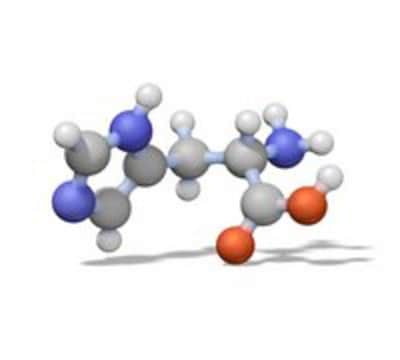Transportation information can be found in Section 14 of the product's (M)SDS.To access the shipping information for this material, use the link on the product detail page for the product.
T9128
Trypsin inhibitor
lyophilized powder, suitable for inhibition assay
Sinônimo(s):
SBTI
About This Item
Produtos recomendados
Nome do produto
Trypsin inhibitor from Glycine max (soybean), lyophilized powder
fonte biológica
Glycine max (soybean)
Nível de qualidade
tipo
Type II-S
Formulário
lyophilized powder
peso molecular
20,100 Da
técnica(s)
inhibition assay: suitable
solubilidade
balanced salt solution: 1 mg/mL
concentrate: >10 mg/mL, hazy, amber-yellow
phosphate buffer: 10 mg/mL
water: 10 mg/mL
serum-free medium: soluble
Condições de expedição
ambient
temperatura de armazenamento
2-8°C
Procurando produtos similares? Visita Guia de comparação de produtos
Ações bioquímicas/fisiológicas
Componentes
Definição da unidade
Nota de preparo
Solutions can retain activity when stored short-term at 2-8° C. Solutions are stable in frozen aliquots at -20°C.
Nota de análise
Aplicação
Palavra indicadora
Danger
Frases de perigo
Declarações de precaução
Classificações de perigo
Resp. Sens. 1 - Skin Sens. 1
Código de classe de armazenamento
11 - Combustible Solids
Classe de risco de água (WGK)
WGK 3
Ponto de fulgor (°F)
Not applicable
Ponto de fulgor (°C)
Not applicable
Equipamento de proteção individual
Eyeshields, Gloves, type N95 (US)
Escolha uma das versões mais recentes:
Certificados de análise (COA)
Não está vendo a versão correta?
Se precisar de uma versão específica, você pode procurar um certificado específico pelo número do lote ou da remessa.
Já possui este produto?
Encontre a documentação dos produtos que você adquiriu recentemente na biblioteca de documentos.
Os clientes também visualizaram
Protocolos
This technical article described the Enzymatic Assay of Trypsin Inhibitor.
Chromatograms
application for HPLC-
What is the Department of Transportation shipping information for this product?
1 answer-
Helpful?
-
-
What is the molecular weight and amino acid sequence of trypsin inhibitor from Glycine max (soybean)?
1 answer-
Soybean trypsin inhibitor is a mixture of the three types. We have not characterized our trypsin inhibitor products in terms of how much of each of the three types may be present. All three have a molecular weight of between 20,000 and 20,200 daltons, so one might use 20,100 daltons as an average.The three types vary in the amino acids at a few positions. The detailed summary of the three types (or variants) was published in the following linked reference: J. Biochem. (Japan), 98, 435-448 (1985).Note that the authors use Tia, Tib and Tic to indicate the three variants.
Helpful?
-
Active Filters
Nossa equipe de cientistas tem experiência em todas as áreas de pesquisa, incluindo Life Sciences, ciência de materiais, síntese química, cromatografia, química analítica e muitas outras.
Entre em contato com a assistência técnica











